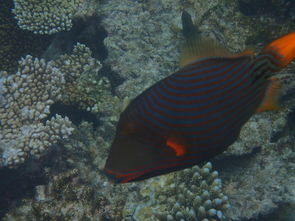
Content:
Introduction: Fishing, an age-old pastime, offers a serene escape from the hustle and bustle of daily life. Among the various fishing styles, slow-pitch fishing has gained popularity for its relaxing nature and the thrill of reeling in a catch. However, mastering the art of slow-pitch fishing and catching fish consistently can be challenging. In this article, we will delve into the world of slow-pitch fishing and provide you with essential techniques to improve your chances of landing more fish.
Understanding Slow-Pitch Fishing: Before we dive into the techniques, it's crucial to understand the basics of slow-pitch fishing. This method involves casting a lure or bait at a slow and deliberate pace, allowing it to sink to the desired depth before retrieving it. The slow movement mimics the natural movement of prey, attracting fish and increasing your chances of a successful catch.
Choosing the Right Equipment: To excel in slow-pitch fishing, you need the right equipment. Here are some essential items to consider:
a. Rod and Reel: Opt for a medium-heavy to heavy-duty rod with a fast action. This will provide the necessary power to cast and set the hook effectively. A spinning reel is ideal for slow-pitch fishing, as it allows for smooth retrieves and precise control.
b. Line: Use a monofilament line with a breaking strength of 10-15 pounds. This will provide enough strength to handle most fish species while remaining flexible enough for slow retrieves.
c. Lures and Baits: Choose lures or baits that mimic the natural movement and appearance of the prey in your target fishing area. Soft plastics, crankbaits, and spinnerbaits are popular choices for slow-pitch fishing.
Casting Techniques: Casting is a fundamental skill in slow-pitch fishing. Here are some tips to improve your casting technique:
a. Hold the rod correctly: Grip the rod with a firm but relaxed grip, using your fingers to control the rod's movement. Keep your wrist and arm loose to allow for smooth casting.
b. Load the rod: Begin by lifting the rod tip slightly, then lower it back to the water's surface. As you lower the rod, allow the line to straighten out and load the rod with tension.
c. Cast with a smooth motion: Begin the casting motion by sweeping the rod back and forth in a smooth, continuous motion. Avoid jerking or stopping the rod, as this can cause the lure to move erratically.
d. Aim for accuracy: Focus on casting directly at your target, ensuring the lure lands in the desired location. Practice your casting technique to improve accuracy and consistency.
Retrieval Techniques: The retrieval technique is equally important in slow-pitch fishing. Here are some tips to help you master it:
a. Slow and steady: Retrieve the lure at a slow and steady pace, allowing it to sink to the desired depth. Avoid quick or erratic movements, as this can spook fish.
b. Vary your retrieve: Experiment with different retrieves, such as a slow roll, a twitch-and-pause motion, or a steady retrieve with occasional pauses. This will mimic the natural movement of prey and attract more fish.
c. Watch for strikes: Pay close attention to the line and rod tip for any signs of a strike. A sudden tap, a sudden pull, or a change in the line's tension can indicate a fish has taken the bait.
Fish Location and Behavior: Understanding the fish's location and behavior is crucial for successful slow-pitch fishing. Here are some tips to help you locate and target fish:
a. Research the area: Before heading out, research the fishing spot to understand the fish species, their preferred habitats, and feeding patterns.
b. Look for signs of fish activity: Keep an eye out for signs of fish activity, such as surface disturbances, bubbles, or fish jumping out of the water.
c. Adapt your approach: Adjust your lure choice, retrieve technique, and depth based on the fish's behavior and location.
Patience and Persistence: Lastly, remember that patience and persistence are key in slow-pitch fishing. Fish may not bite immediately, but staying focused and adapting your technique can lead to a successful catch.
Conclusion: Mastering the art of slow-pitch fishing requires practice, patience, and a thorough understanding of the techniques involved. By following the tips outlined in this article, you can improve your chances of catching more fish and enjoying a fulfilling fishing experience. Happy fishing!












